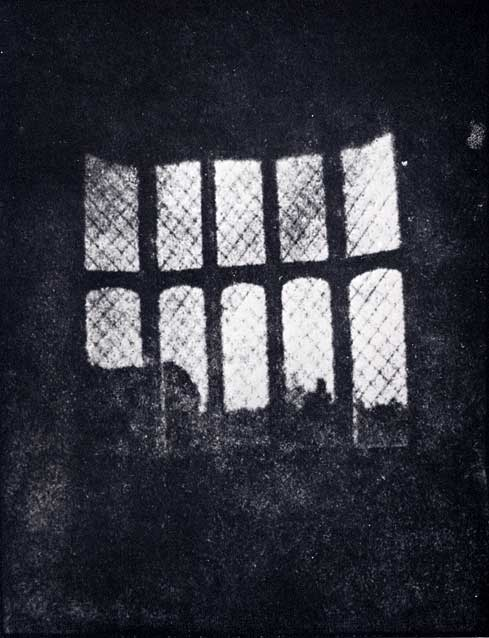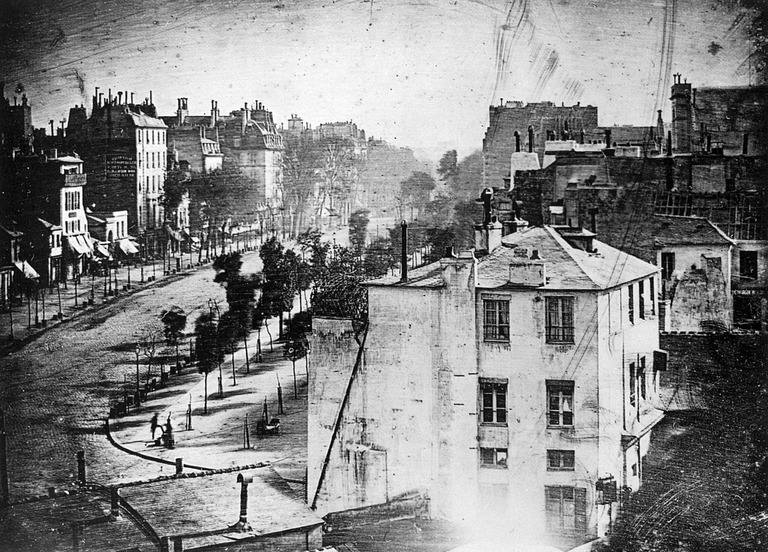holoz0r's Art Essays: Photography: Origins and Early Chemical Processes
The introduction of Photography as a medium of representation had many impacts on Aesthetics, Representation and challenged the very role of the ‘Artist’. In this essay, a brief summary will be given outlining the pioneers of the process of photography, and the differing methods that were used.
The discovery of the principles of photography cannot be accredited to one specific individual or organization; there are many key pioneers whom must be acknowledged. The underlying concepts of photography, and the use of the camera obscura must also be acknowledged, Brian Coe (1967, p9) notes that this concept was known as early at the 10th Century AD by the Arabian scholar Alhazen, whereas in their text, A Concise History of Photography, Helmut and Alison Gernsheim (1965, p10) state that the principle of the camera obscura was known as early as Aristotle.
Willfried Baatz (1999, p11) acknowledges several key developments in the camera obscura, most notably those of Giovanni Battista della Porta, who in 1533 described the operation of the camera obscura, and that of Daniello Barbaro, whom several years after noted that replacing the simple hole of the camera obscura with a lens dramatically enhanced the image projected.
The camera obscura, and its use as a drawing aid to artists is widely noted, however the notion of fixing the projected image of the camera obscura is one which does not emerge until a much later time, with key pioneers in this idea being Niepce, Daguerre and Talbot.

In 1822, Niepce was the first to produce a photographic image (Janson, H.W. & Janson, A.F., 2001, p702), which was fixed to a physical medium.
Derrick Price (1997, p13) credits the work of Niepce as being a precursor to the discovery of the Daguerreotype. The Daguerreotype was first publicly launched on August 19, 1839 in France.
Daugerre’s process is clearly outlined by Arnold Gassand (1972, p23) as the coating of a copper plate with silver, which is then made sensitive to light using iodine fumes. This was then exposed to light using a camera, the was image then developed through the use of mercury, with the final step in the process the removal of the excess silver iodine, which prevented the image from darkening further after development.
While this was going on in France, William Henry Fox Talbot, in England was developing a process of his own. Talbot’s process was similar; however it produced a negative image, (Coe, 1967, p24) from which positives could be later created.

Latticed window at Lacock Abbey, August 1835. A positive from what may be the oldest existing camera negative.
Talbot’s technique varied from Daguerre’s in a few fundamental ways. Firstly, the use of paper instead of a copper plate as the physical medium for the image meant that it was more versatile. This was then primed with silver nitrate and silver chloride, which was then fixed using ammonia, sometimes potassium iodine. (Gernsheim, H. & Gernsheim, A., 1965, p30) This technique, known as the Talbotype, was later enhanced by replacing the paper with a sheet of glass, which was thereafter referred to as a Calotype.
It can be noted that both Daguerre and Talbot’s techniques used similar chemicals, and a process that was not dissimilar; they had both discovered and practiced their techniques independently.
 View of the Boulevard du Temple was taken by Daguerre in 1838
View of the Boulevard du Temple was taken by Daguerre in 1838However, despite Talbot and Daguerre both developed techniques which gave the ability to reproduce the world with a great amount of detail (without the need for an artist), both systems were problematic in terms of practical use. For example, both processes required extremely long periods of exposure – upwards of ten minutes in many cases.
Talbot’s early Calotypes were inferior to the incredible resolving power of Daguerre’s images, and as the Grienshem’s (1965, p31) text explains, Talbot chose subject matter which ‘failed to capture the imagination of the public.’ By 1841, Talbot had refined his process to bring it on par with Daguerre’s; and the fact that Talbot’s process produced negatives (from which multiple positives could be reproduced), unlike Daguerre’s process, which produced a ‘once off’ image.
The use of this negative / positive process is the first precursor to modern film based photography. However, many other improvements and key developments are integral in seeing the path to modern day photography, these developments including a Albumen on glass process, which was developed by Abel Niepce de Saint Victor (Gernsheim, H. & Gernsheim, A., 1965, p31), and the Collodion process; discovered by Frederic Scott Archer (Ibid).
It is at this point where photography and the production of photographic materials then becomes a broad and corporate endeavour, with factories being established to create photography equipment and supplies, and the scope of this is far too broad for this brief summary. The development of roll film however is notable, introduced by George Eastman in 1888. (Gernsheim, H. & Gernsheim, A., 1965, p48)
Of course, there have been almost countless improvements since 1888 time in terms of film, photography and the mechanics of the camera itself, with modern day photography employing digital techniques and electronic circuits as a substitute for the light sensitive film, however once more, and quite disappointingly, these are beyond the scope of this short essay.
Want more content from me?
Witness my futile efforts to play my Steam Game collection in alphabetical order.
Are you aware that I love photography? Check out my work in a collection.

If you want to see my Splinterlands antics and rants live, Find me on Twitch
If you prefer sleeping in your designated time zone, go watch replays on YouTube.